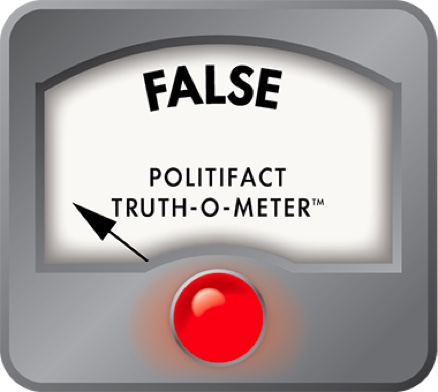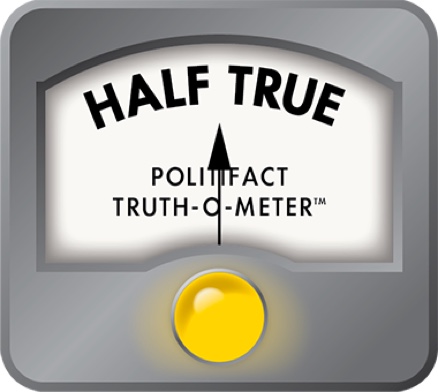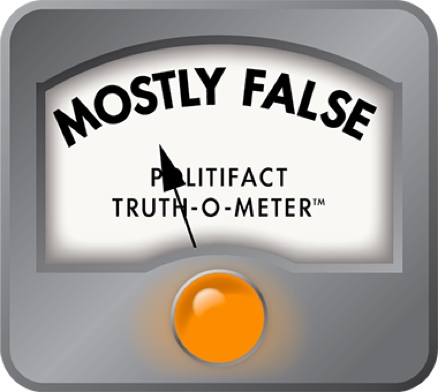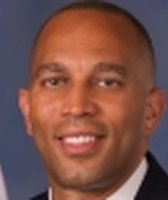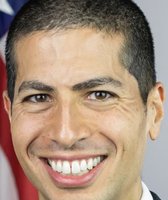Get PolitiFact in your inbox.

President Donald Trump speaks with reporters in the Oval Office on March 7, 2025. (Pool via AP)
President Donald Trump took a victory lap after the release of February’s monthly job figures, which showed a gain of 151,000 positions, roughly in line with expectations.
Critics warned that job losses could follow in subsequent monthly reports, as federal layoffs and uncertainty over tariff enactment ripples through the economy. The February data stems from surveys conducted in mid-February, so job losses after that date, including federal workers, are not reflected in the data released March 7.
Here, we fact-checked a few of Trump’s assertions. The White House did not respond to an inquiry for this article.
"During the final two years of (the) Biden (administration), one in every four jobs created in America was a government job."
This needs context.
The numbers accurately reflect the data for the final two years of President Joe Biden’s tenure. But Trump cherry-picked the time frame. Other, more typical time periods — such as a full presidential term — produced a lower share for government jobs.
Looking at Biden’s full four-year term, government jobs accounted for 11.3% of the total employment increase, not the 25% figure Trump cited.
If measured from June 2022, when U.S. employment returned to its prepandemic levels, government jobs accounted for 21.7% of the employment gains, which is closer to what Trump said. Starting the count here would be logical, because the job gains before June 2022 were replacing jobs lost during the pandemic, which had seismic effects on the U.S. labor market.
Also, these counts include state and local government jobs, not just federal jobs. As with any president, Biden had no direct influence on state and local government hiring. Currently, about seven of every eight government jobs are at the state or local level.
In a CNN interview a few hours before Trump’s remarks, Kevin Hassett, director of Trump’s National Economic Council, offered a similar talking point but without the two-year framing. Hassett said "the Biden administration created a lot of jobs, and they tended to be government jobs. About 25% of the jobs created were government jobs."
Not including a timeline makes Hassett’s framing less accurate than Trump’s, because viewers may have thought Hassett was talking about Biden’s full four years.
"During the last year, the Biden administration saw a loss of more than 110,000 manufacturing jobs, or 9,000 manufacturing jobs every single month."
This needs context.
These figures are correct for the final year of Biden’s term, but the statistic ignores that during the first three years of Biden’s tenure, manufacturing employment rose by 721,000. Some of the increase reflected the comeback from pandemic-era job losses. Biden’s final monthly manufacturing jobs number was still 12,000 higher than in February 2020, the last prepandemic month under Trump’s first presidency.
After a recession, like the one that coincided with the start of the pandemic, it’s typical for manufacturing jobs to decline significantly and remain depressed for the long term. We found that the post-recession manufacturing employment gains under Biden were the strongest in 72 years, and the second strongest since World War II.
The U.S. "created 10,000 manufacturing jobs in February alone."
This is accurate.
In the context of almost 12.8 million manufacturing jobs nationwide, this is a modest increase, accounting for a bump of less than 0.08%.
"Auto workers lost more than 27,000 auto jobs in the final year of Biden."
This needs context.
The one-year figure is accurate, but during Biden’s full term, the number of auto jobs rose by 47,000. From June 2022 to the end of Biden’s term in January, auto jobs initially rose and then declined, ending up in essentially the same place as they were in June 2022.
"For the first time in 15 months, the job gains for native-born Americans … exceeded job gains for migrant and foreign-born workers."
This is inaccurate.
First, there is no statistical category for "migrant" employment. The only available categories are for native-born employment and foreign-born employment. The latter includes naturalized U.S. citizens.
Also, the data for these two statistics tends to be what economists call "noisy," because unlike the other employment statistics, these metrics are not seasonally adjusted, a process that smooths out the data based on typical hiring patterns for specific months.
In the 15 months from December 2023 to February 2025, we found that about half the months had a bigger gain for native-born workers and about half had a bigger gain for foreign-born workers. (Because this data often swings from month to month, many months saw declines in employment for one or both categories, and when both categories were negative in a given month, we considered the smaller of the two losses to be the one that’s "bigger.")
Specifically, using raw numbers, native-born workers had the bigger gain in eight of the 15 months. But since the number of native-born workers is more than four times larger than the number of foreign-born workers, we also calculated the percentage increases for each category. Using percentages, native-born workers had bigger gains (or smaller losses) in nine of the 15 months.
Neither method produced a finding that February 2025 was the first month in 15 to show greater native-born job gains compared to foreign-born job gains.
Our Sources
Donald Trump, remarks from the Oval Office, March 7, 2025
Federal Reserve Bank of St. Louis, "All Employees, Total Nonfarm," accessed March 7, 2025
Federal Reserve Bank of St. Louis, "All Employees, Government," accessed March 7, 2025
Federal Reserve Bank of St. Louis, "All Employees, Federal," accessed March 7, 2025
Federal Reserve Bank of St. Louis, "All Employees, Manufacturing," accessed March 7, 2025
Federal Reserve Bank of St. Louis, "Employment Level - Native Born," accessed March 7, 2025
Federal Reserve Bank of St. Louis, "Employment Level - Foreign Born," accessed March 7, 2025
Federal Reserve Bank of St. Louis, "All Employees, Motor Vehicles and Parts," accessed March 7, 2025
PolitiFact, "Fact-checking Joe Biden on the creation of 800,000 manufacturing jobs," December. 13, 2023
Email interview with Dean Baker, co-founder of the Center for Economic ad Policy Research, March 7, 2025




